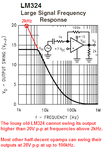pal114525
Member level 5

Hi,
Would you be kind to explain me the following point:
If my design works on DC voltage, how it will pick the mains hum ( at 50 Hz)?
Thanks & Regards.
- - - Updated - - -
Hi,
Would you be kind to explain me the following point:
If my design works on DC voltage, how it will pick the mains hum ( at 50 Hz)?
Thanks & Regards.
- - - Updated - - -
Hi,
Would you be kind to tell me the following point:
1. What should be the no. of turns of the transmit coil and the receiver coil for a walk-through metal detector?
2. What should be its shape, Elliptical or Rectangular for a walk-through metal detector?
Thanks.
- - - Updated - - -
Hi,
Would you be kind to tell me the following point:
1. What should be the no. of turns of the transmit coil and the receiver coil for a walk-through metal detector?
2. What should be its shape, Elliptical or Rectangular for a walk-through metal detector?
Thanks.
- - - Updated - - -
Hi,
Thanks for your valuable feedback.
I have attached the schematic of the Transmitter circuit for a walk-through metal detector. I am using Wien Bridge oscillator for generating 18 KHz frequency and transmitting it through a transmitter coil into the air.
Would you be kind to tell me the following point:
1. What would be the optimum no. of turns of the transmitter coil for a walk-through metal detector for 18 KHz signal?
2 Should it be an elliptical or rectangular in shape?
Thanks.
Would you be kind to explain me the following point:
If my design works on DC voltage, how it will pick the mains hum ( at 50 Hz)?
Thanks & Regards.
- - - Updated - - -
Hi,
Would you be kind to explain me the following point:
If my design works on DC voltage, how it will pick the mains hum ( at 50 Hz)?
Thanks & Regards.
- - - Updated - - -
Hi,
Would you be kind to tell me the following point:
1. What should be the no. of turns of the transmit coil and the receiver coil for a walk-through metal detector?
2. What should be its shape, Elliptical or Rectangular for a walk-through metal detector?
Thanks.
- - - Updated - - -
Hi,
Would you be kind to tell me the following point:
1. What should be the no. of turns of the transmit coil and the receiver coil for a walk-through metal detector?
2. What should be its shape, Elliptical or Rectangular for a walk-through metal detector?
Thanks.
- - - Updated - - -
Hi,
Thanks for your valuable feedback.
I have attached the schematic of the Transmitter circuit for a walk-through metal detector. I am using Wien Bridge oscillator for generating 18 KHz frequency and transmitting it through a transmitter coil into the air.
Would you be kind to tell me the following point:
1. What would be the optimum no. of turns of the transmitter coil for a walk-through metal detector for 18 KHz signal?
2 Should it be an elliptical or rectangular in shape?
Thanks.





